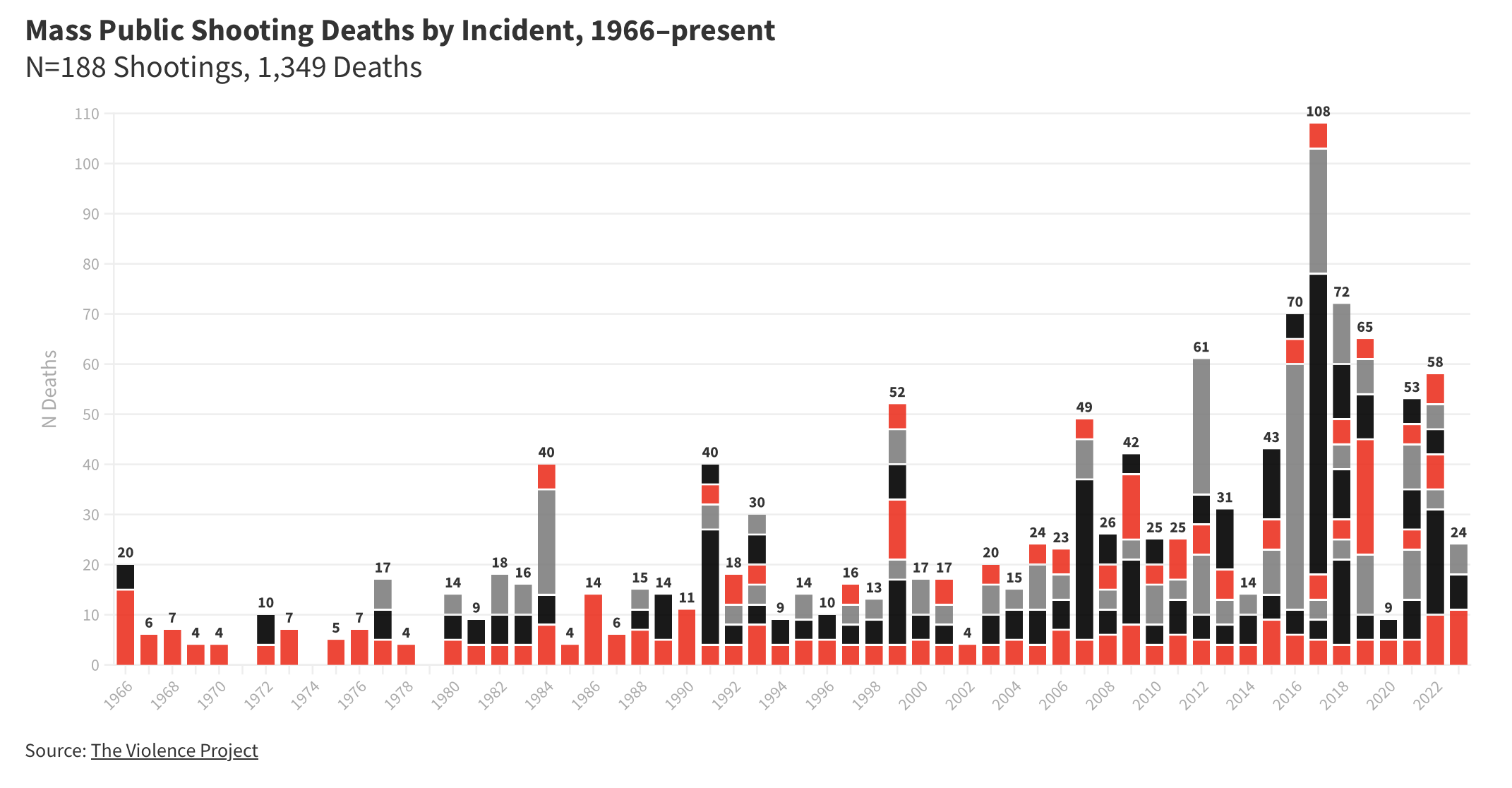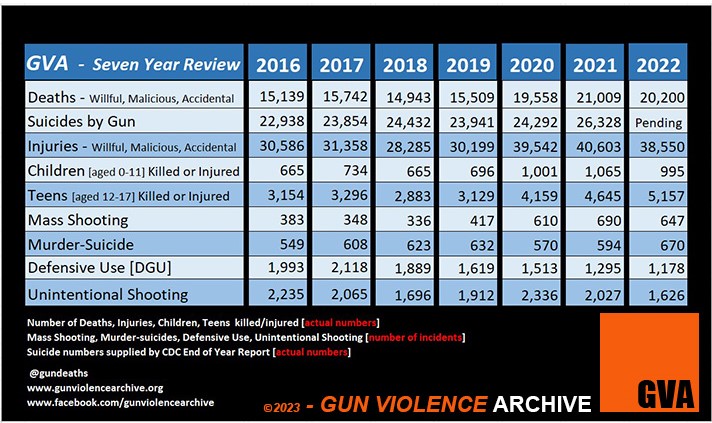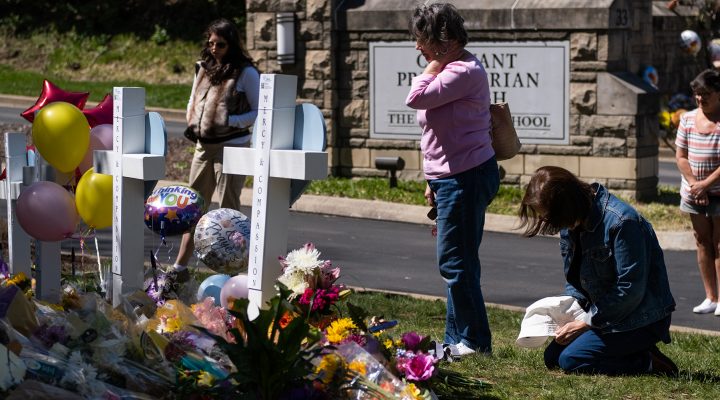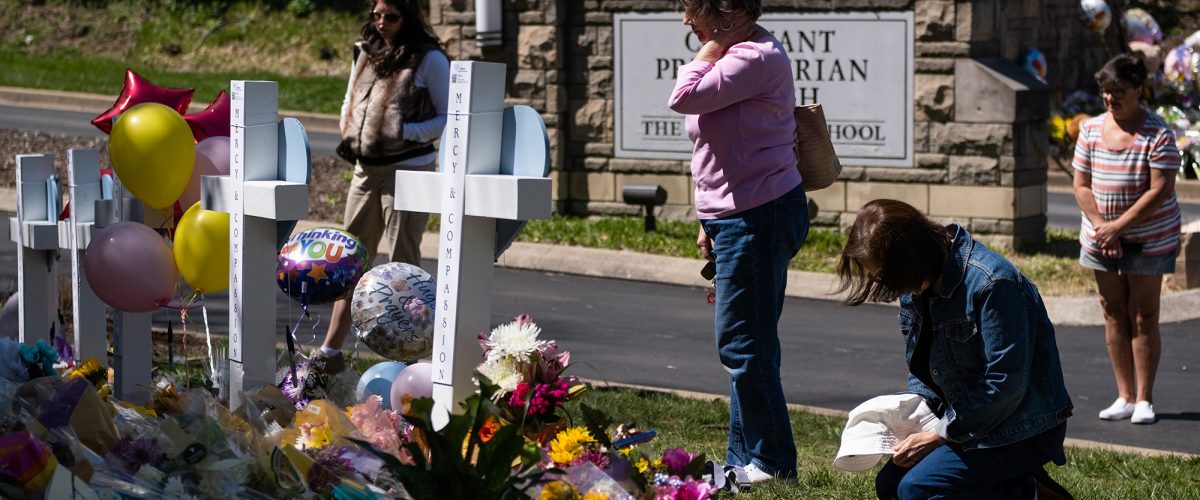Confusion over the gender identity of the Nashville school shooter has allowed some commentators to flip the script and blame mental illness, not guns, for the death of three 9-year-olds and three adults at Covenant Day School last week.
U.S. Rep. Marjorie Taylor Greene , R-Ga., tweeted her belief the shooter was taking hormones and additional medications for mental illness, speculating these treatments were to blame for the deaths of the six victims, not easy access to guns.
Others claimed there is a direct correlation between transgender identity itself and violent behaviors like school shootings. Benny Johnson, political columnist and official with Turning Point USA, tweeted a list of trans and nonbinary mass shooting perpetrators along with the claim, “The modern trans movement is radicalizing activists into terrorists.”
But none of this is true. And the back story on the shooter’s gender identity and mental health remains unknown. Despite public speculation and initial assumptions by police, authorities now assert the gender identity of the shooter remains unclear.
Is he or isn’t she?
First described as a “young female teenager,” then as a 28-year-old woman, authorities changed the shooter’s description to “transgender male,” reflecting identities found on the suspect’s social media.
Talk of a transgender shooter immediately changed the conversation.
“Talk of a transgender shooter immediately changed the conversation.”
In a report for The Guardian discussing these changing gender descriptions, Ed Pilkington called this an “exceptionally rare” incident, as all recorded data show a vast majority of those who commit mass shootings are cisgender males. “Cisgender” means a person who identifies as the gender they were assigned at birth.
There are multiple different agencies through which gun violence data is processed, with each agency categorizing shootings slightly different. The Gun Violence Archive defines “mass shooting” as an incident in which a minimum of four victims are shot, not including any perpetrator who may have been killed or injured during the incident.
According to the Gun Violence Archive, there have been 306 mass shootings in the U.S. since 2009. In only four of those instances, there has been a transgender or nonbinary shooter, which is only 1.3% of all mass shooters. This means 98.7% of all mass shooters in the United States are cisgender.
Additionally, according to the Violence Project in a study examining 172 mass shooters between 1966 and 2020, 97.7% of mass shootings are carried out by men. Of the 172 mass shooters studied, only four were women, two of whom committed the shooting in partnership with a man.
Thus, research has overwhelmingly shown the most common demographic to commit mass shootings is cisgender males. There is less than a 2% chance that a mass shooting will be carried out by a transgender person, and less than a 3% chance one will be carried out by a woman.
So, if the Nashville shooter did, in fact, identify as a transgender male, he would be an exception to an overwhelming norm.
More diversion
Yet some conservative commentators — who already publicly opposed legislation in support of gender-affirming health care for transgender persons — asserted there are four examples over the past five years in which the perpetrator of a shooting was transgender or nonbinary. Therefore, they said, there is a correlation between transgender identity and becoming a shooter.
Vivek Ramaswamy, a Republican running for U.S. president in 2024, claimed the U.S. Department of Education is funding “radical gender and racial ideology to create psychopaths” and is failing to “protect kids in our schools from being killed by them.”
Again, this is not true.
Due to the small number of known perpetrators of mass shootings who identify as transgender, researchers in gun violence statistics have not identified a trend relating to transgender or nonbinary identity and the likelihood of becoming a mass shooter.
“Among cisgender males, there is a clear correlation.”
However, among cisgender males, there is a clear correlation.
Much research has been done on the possible explanations for why cisgender males, specifically, are more likely to commit these acts of tragic violence compared to other gender identities.
Some research has shown superficial characteristics (such as low muscle tone or romantic rejections) among cisgender boys can contribute to feelings of insecure masculinity. This can lead to the desire to seek out opportunities to engage in violent behaviors, like mass shootings, which perpetrators believe will enhance their masculinity.

Add mental health to the equation
In the past, conservative responses to mass shootings typically involved a positive discussion surrounding mental health, with promotion of better and more accessible mental health care for children and teenagers who may be struggling with thoughts of self-harm or harming others due to underlying mental health issues. This often is proposed in resistance to a push for stricter gun laws. In the past, mental health care has been touted as a cure for violence more appropriate than reducing access to guns.
However, when the Nashville shooter’s gender identity was reported to be trans, some of these same people wrongly named gender dysphoria as a mental illness and blamed the medical treatment of gender dysphoria as a cause of the violence.
Typically, the public tends to think mental health care has not been promoted enough, and more radical intervention is needed to psychologically aid youth, specifically boys and men, who are contemplating violence due to undiagnosed mental illness. Theoretically, promoting better mental health care resources would work to prevent them from resorting to violence, and thus prevent mass shootings. Despite this popular rhetoric, research has shown this to be a misconception.
In a 2021 project, psychologists discovered only 5% of mass shootings occur due to severe mental illness. They also found 25% of mass shootings are associated with perpetrators who have non-psychotic psychiatric mental illnesses (such as depression) and 23% with substance use, although researchers emphasize these factors are not consequential in the shooter’s decision to commit mass shootings.
What are the common predictors? A “desire for notoriety among young men” and a history of legal problems were found to be some of the most prominent causational factors.
Researchers say their findings do not eliminate the need for better mental health care among youth, but they do eliminate the misconception that poor mental health leads people to commit tragic acts of violence, destigmatizing mental illness for those seeking care.
“In the rare cases when the shooter is transgender, this rhetoric of misconception intensifies.”
In the rare cases when the shooter is transgender, however, this rhetoric of misconception intensifies. Mental health care is viewed as too radical, and treatments that are beneficial for many are perceived as the cause of violence. It is not only the presumed mental illness itself that acts as the motivation for the mass shooting, but also the perceived use of hormones and treatments that are consequential in the tragedy.
This disregards research showing physical and mental health care have many benefits for transgender youth contemplating harmful behaviors. For example, the risk of suicide among trans and nonbinary youth reduces by 73% when receiving gender-affirming health care.
Among this confusing and opposing rhetoric, gun laws get pushed out of the conversation, sometimes to the delight of politicians who don’t want to talk about it.
Legally obtained firearms
Back to Marjorie Taylor Greene, who proudly noted in her tweet blaming mental health care for the Nashville shooting that guns are not the problem. Greene made this claim despite the shooter’s ability to legally obtain firearms even though their parents have stated they “felt their child shouldn’t own any weapons.”
Tennessee has no “red flag” laws giving police authority to remove weapons from citizens, even potentially dangerous persons. The state also does not require background checks prior to the purchase of firearms, making it extremely easy to obtain weapons. This means the shooter, even though others may have been wary of concerning behavior prior to the incident, had complete legal ability to obtain the firearms used in the shooting.
While exceptional in some ways, the Nashville shooting shares one common trait with other mass shootings.
The shooter used three of seven weapons legally obtained between 2020 and 2022 — an AR-15 military style rifle and a 9 mm Kel-Tec SUB2000 pistol caliber carbine, both semi-automatic, and according to experts who reviewed photos of the weapons, appear to have 30-round magazines. The third weapon was a 9 mm Smith and Wesson M&P Shield EZ 2.0 handgun.
According to a study conducted by Charles DiMaggio, 85% of fatalities during mass shootings are caused by assault rifles, rather than non-assault rifles or handguns. The same study found that, during the U.S. assault rifle ban between 1994 and 2004, “mass shooting fatalities were 70% less likely to occur” compared to before the ban.
“When an assault rifle is used in a shooting, the likelihood of survival for those involved is much lower.”
This means that, although assault rifles are not the only style of guns used in mass shootings, when an assault rifle is used in a shooting, the likelihood of survival for those involved is much lower.
According to the study conducted by the Violence Project, semi-automatic assault weapons are the second most common weapon used in a mass shooting, second to hand guns. Researchers found that 80% of mass shooters “used at least one handgun during their crime,” and 28% of shooters used a semi-automatic assault weapon. They also found 73% of shooters who used a semi-automatic assault weapon also used a handgun.
The Violence Project reports half of all mass shooters legally obtained the firearms they used to commit their crimes. In contrast, only 28.5% of mass shooters illegally obtained their firearms.

What about the ‘good guy with a gun’?
When rhetoric in response to mass shootings does tackle the gun debate, often what it references is the “good guy with a gun” argument. Supporters of loose gun laws want to be able to have their own guns because they fear an incident in which they are faced with a shooter but cannot defend themselves.
In most mass shooting events, the incident ends when perpetrators kill themselves, flee, are shot or are subdued by police.
During 16% of incidents, civilians have stopped the perpetrator themselves, but most of the time this is done without the use of a firearm. Although it has happened before, it is rare that a civilian will be able to subdue a shooter with their own firearm before the police arrive.
Other responses in this debate specifically discuss women and the threats of violence they face every day. These arguments are framed around the assumption that when women carry firearms, they are safer because they can defend themselves from threats of violence. If women are not able to own guns, they will be left defenseless. If women do own guns, they will not be victims of violent crimes.
However, owning a gun is actually more unsafe for women.
Women are only able to defend themselves against attempted or completed crimes using firearms 0.4% of the time. In fact, numerous studies have shown when a woman has a firearm in her home, it is far more likely that firearm will be used against her or her family by an attacker than by her in defense against an attacker.
This is due, in part, to the fact that most violence committed against women is committed by trusted men in their inner circles, such as boyfriends, brothers or fathers who know the gun is in the home and can easily access it.
When it comes to violent crimes, the research is clear: When guns are around, the “good guy” is often unable to get to them before the bad guys can use them to hurt others.
What matters
Debates about gender and mental health are diversions from the things that matter most in preventing mass shootings. Meanwhile, children are dying.
“This year alone, 61 children ages 11 and younger have been killed and 357 teenagers have been killed.”
The Gun Violence Archive keeps an updated list of shooting incidents in the U.S. in an online chart that can be filtered based on incident characteristics. This year alone, 61 children ages 11 and younger have been killed and 357 teenagers have been killed.
Will conversations about the shooter’s gender identity or the “radical” mental health care they were perceived to have been undergoing lower these horrifying statistics? No.
What this shift in rhetoric will do, however, is turn attention away from what type of weapons continue to be used to commit these acts of violence, how these weapons are attained and what the U.S. might do to end this violence. And as mass shootings continue to occur, American excuses for avoiding conversations about gun laws will continue to dwindle.

Mallory Challis
Mallory Challis is a senior at Wingate University and serves as BNG’s Clemons Fellow.
Related articles:
In the gun violence debate, let’s stop scapegoating mental illness | Opinion by Curtis Ramsey-Lucas
Holy Week 2023: When Golgotha came too early | Opinion by Bill Leonard


